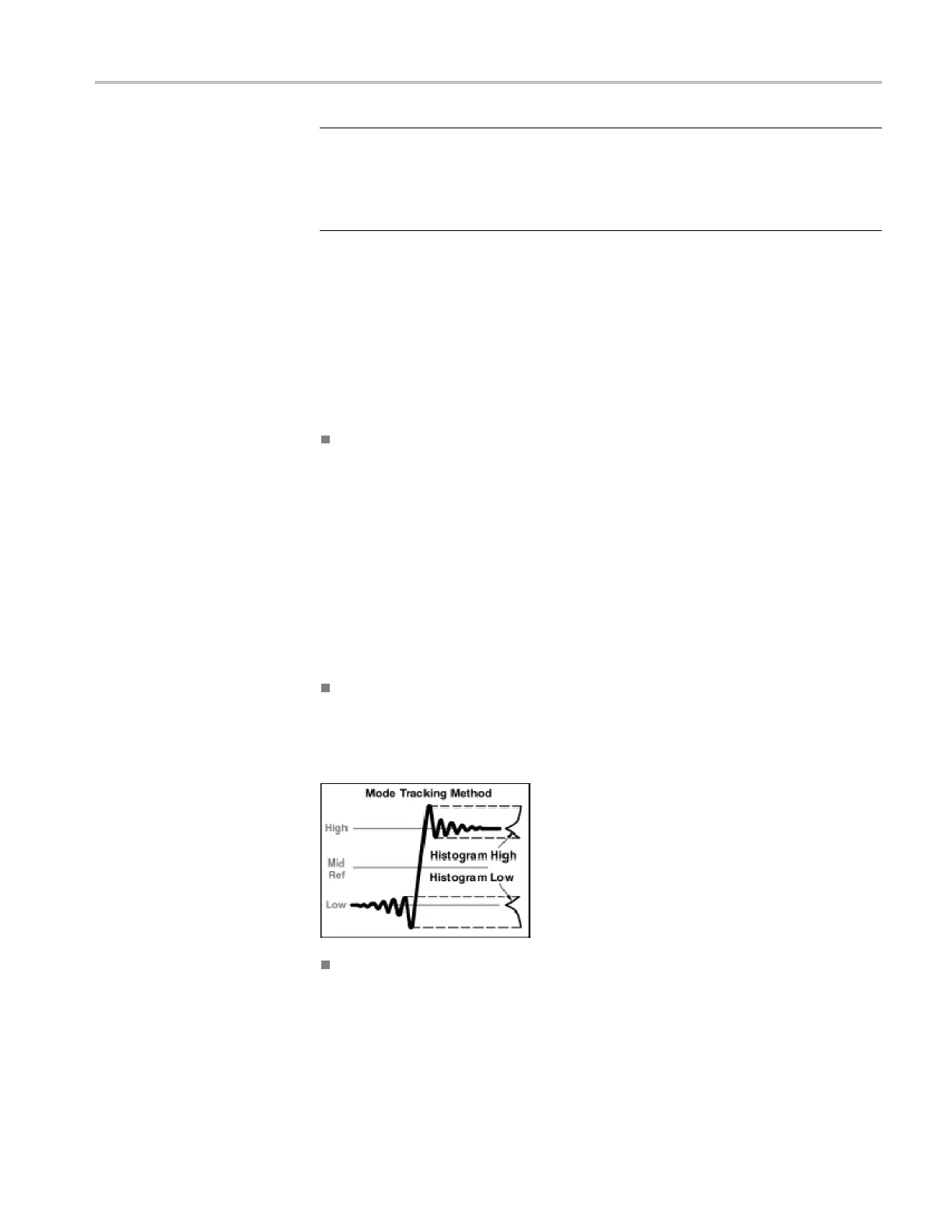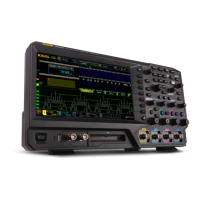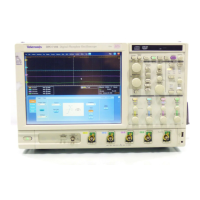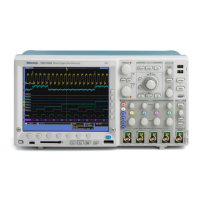Commands Listed in Alphabetical Order
NOTE. The SOURC
E<x> SOURCE:<<x> argument specifies the
source, which can be source 1 or source 2. To set the actual waveform
(channel, reference, or math) that is assigned to source, you must use the
MEASUrement:MEAS<x>:SOURCE<x> WFM command. Two sources are
provided because some measurements (gain, phase) require two sources.
Group
Measurement
Syntax
MEASUrement:MEAS<x>:SOUrce <x>:HILow:METHod {AUTO | MODE |
MINMax | MEAN}
MEASUrement:MEAS<x>:SOUrce <x>:HILow:METHod?
Arguments
AUTO attempts to use the most appropriate method of calculating the high
and low values for the specified signal type. If the signal type is set to Eye,
the instrument defaults to the Mean method of calculating the high and low
values. If the signal type is set to Pulse, the instrument defaults to the Mode
method of calculating the high and low values. However, the instrument will
automatically switch to the Min/Max method if the histogram used to track
the high and low values does not show an obvious consistent high level or to
the Mean method if the histogram shows at least two d ifferent concentrations
of peak values. For example, the Mode histogram operating on a triangle
wave would not find significant high and low levels, and the instrument would
switchtotheMin/Maxmode.Onasquarewave,theAutomodewoulduse
the Mode method to calculate the high and low values.
MODE attempts to find, using a histogram, the highest density of points above
and below the waveform midpoint. see figure below. It attempts to ignore
ringing and spikes when determining the 0% and 100% levels. This method
works well when measuring square waves and pulse waveforms.
MINMax defines the 0% and 100% waveform levels as the lowest amplitude
(most negative) and the highest amplitude (most positive) samples. See
the figure below. This method is useful for measuring frequency, width,
and period for many types of signals. However, this method is sensitive to
waveform ringing and spikes and does not always accurately measure rise
time, fall time, overshoot, and undershoot.
DSA/CSA/TDS8X00/B Series Programmer Manual 2-243

